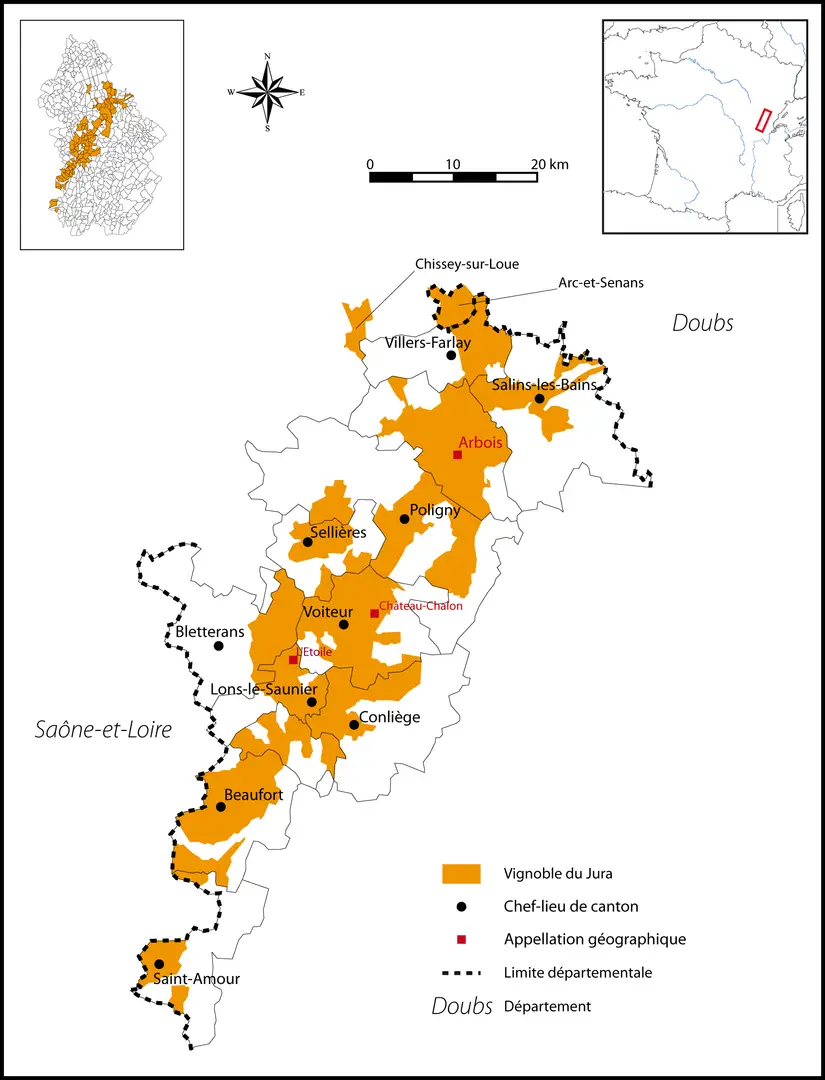
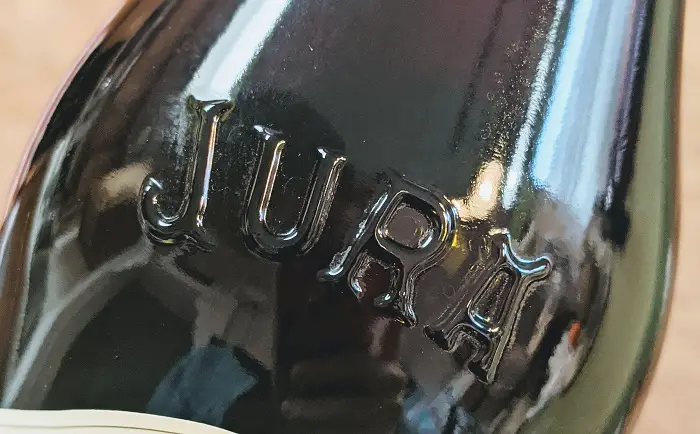
If you’re just hearing about Jura wines, you’re not alone. I recently put together a small tasting for friends and was surprised at the rich winemaking history in the region.
Jura, a wine producing region in the easternmost corner of France, makes white, red, sparkling, and oxidized wines. Jura was once a major wine-producing region in France. Jura has a challenging growing climate with significant rain. The region has a famous wine festival, La Percée du Vin in late spring. Look for Jura wines from specialty wine shops.
Here’s what you need to know about the Jura and Jura wines.
Where Does Jura Wine Come From?
Jura lies in the easternmost corner of France, nestled up against the Jura mountains just west of Switzerland. If you’ve never heard of it, there’s a good reason.

How Jura Wines Used to Be Famous
Up through the early 1800s, Jura (pronounced jur-ah, like giraffe, but without the ffe), was a major player in the French wine scene. Geographically close to Paris, Jura wines flowed to quench the thirst of the capital’s denizens.
A series of unfortunate events led to Jura’s decline starting in the 1850s with the arrival of downy mildew followed by phylloxera.
Then came the advent of the railroad, hauling quaffable wine up from Southern France and further sidelining demand for Jura’s wine.
Two world wars proved a fatal blow and today Jura accounts for only 0.5% of French wines, 1/10 of what it was 170 years ago.
What’s Jura’s Growing Climate?
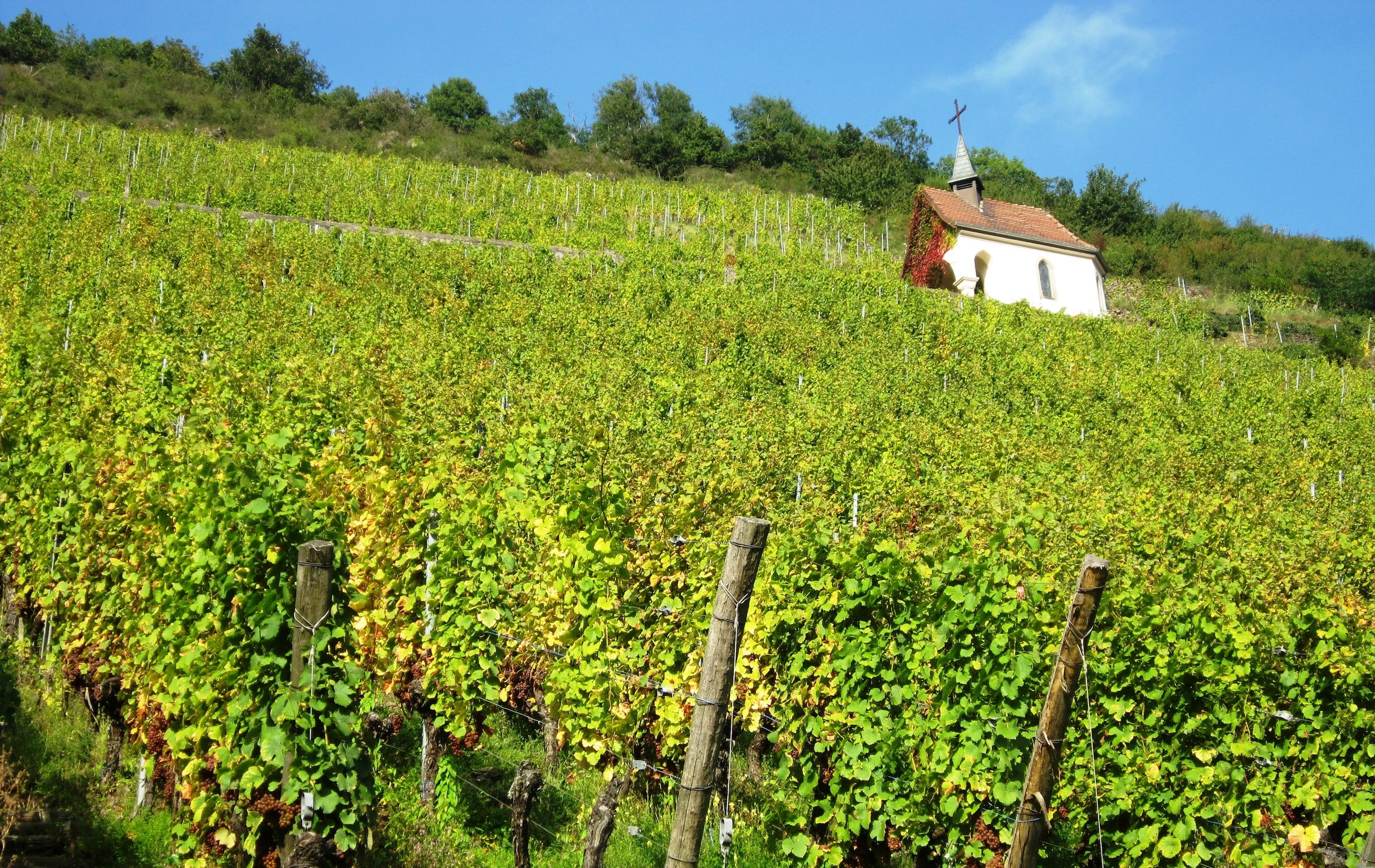
Jura struggles with a moderate continental climate that sees rainfall throughout the growing season.
This means that rain can disrupt flowering and fruitset when the rain knocks off flowers that would otherwise develop into grapes.
Rain can also lead to issues with mildew and diluted flavors (imagine wet bunches of grapes hanging on the vine waiting to get picked.
Vineyards can become muddy and sodden due to their clay-based soils, further challenging vineyard work.
Jura enjoys all of the typical continental challenges, too – spring frost, hail, and early fall rain.
Winegrowers from the Jura cannot be faint of heart.
Today, mechanization is more common because it allows winegrowers to harvest quickly if there’s a coming fall storm that could ruin the vintage.
Even with all of the advances in viticulture, Jura remains a challenging growing region.
Minimum yields are hardly ever met due to crop loss. Vintage variation can be extreme. Between 2016 and 2017, the region produced 45,000 and then 105,000 hectoliters of wine. I’m not much of a math person, but it seems like quite the pendulum.
Jargon Alert: Yield refers to the amount of fruit produced by the vine. There are 2 standard ways to represent this number – hectoliters per hectare or tons per acre.
What Wines Come From Jura?
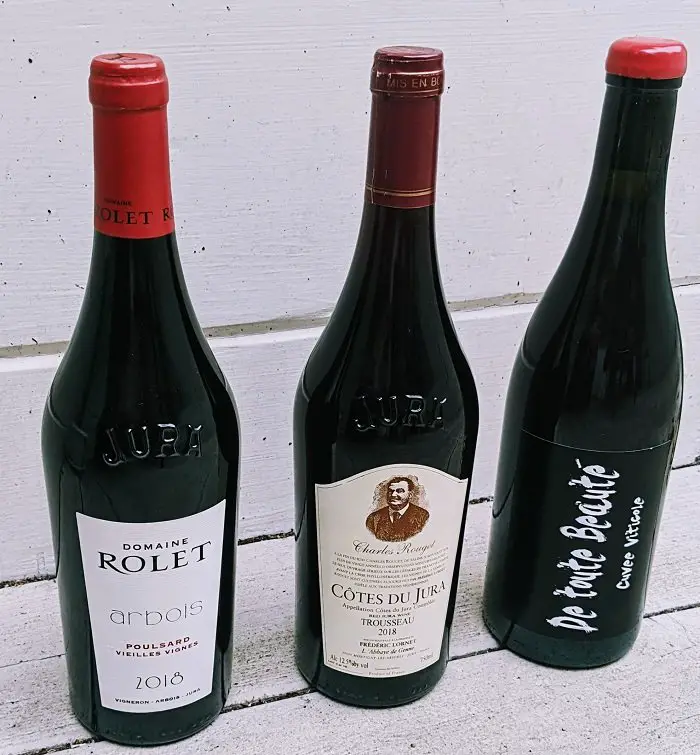
4 Styles of Wines from Jura
- White Wines. These will be a minimum of 80% Chardonnay or Savagnin, a local variety. Most white wines will come under the Côte du Jura appellation, covering the entire region.
- Red Wines. These will be a minimum of 80% Poulsard, Trousseau, or Pinot Noir. Red wines will be lighter in body and on the lower end of medium alcohol given the moderate growing climate. If you enjoy Pinot Noir, you’ll be drawn to reds from Jura. Look for wines from the Arbois appellation.
- Crémant. a.k.a. bubbles. Sparkling wines from Jura mainly use the region’s Chardonnay. These are an affordable alternative to Champagne and of very good to outstanding quality.
- Vin Jaune. The darling of sommeliers, Vin Jaune is an oxidative style of Savagnin aged for a minimum of 60 months (5 long years) in a cask under a veil of yeast. It’s said that if you want to taste the wines of Shakespeare, look no further than Vin Jaune.
Wines that don’t meet the minimum requirements for any of the above categories will be labeled under the generic ‘Vin de France’ or table wine, not overly helpful if you’re looking for wines from Jura.
While there are always exceptions, most wines from the region are typically aged in old oak or, in the case of white wines, stainless steel.
This helps reduce cost, an important factor in a region where yields vary.
This approach also protects delicate aromas and flavors that are typical in wines from cooler growing regions.
Jura Wine Business
The region’s dotted with many small estates, accounting for 50% of producers. Négociants, or buyers, make up an additional 30%, and large cooperatives the remaining 20%.
Jura’s producers have embraced organic and biodynamic viticulture, as well as natural winemaking.
Together, these trending practices make Jura an attractive region for wine enthusiasts on the hunt for novelty.
You won’t find wines from Jura in your local grocery store.
Only 20% of Jura wines make it out of France as exports. Given their minuscule production numbers, you’ll want to look for Jura wines at your local specialty wine shop or via online wine outlets.
What’s So Special About Jura Wines?

Jura’s made my bucket list of wine destinations. Why on earth would this far-flung region of little renown excite me, you ask?
Great question!
The region has capitalized on its local wine culture and celebrates an annual wine fair called the Percée du Vin Jaune.
This boozy gathering occurs in late spring to open a cask of Vin Jaune and ‘pierce the veil’ of yeast that covers the wine, symbolically releasing the 5-year-old vintage onto the market. Like so many juicy wine origin stories, this one stems from legend.
The Ambassadors of Vin Jaune recount the following.
Legend has it that a winegrower who abandoned an old barrel at the back of his cellar discovered years later the magnificent metamorphosis of his wine.
It is said that it is the greatest white wine in the world, the nectar of the gods, the gold extracted from the Jura soil.
It is associated with all superlatives and for good reason, its originality has no equivalence. The subtlety and complexity of its aromas make it an unforgettable encounter.
Here’s a fun video montage of the Percée Vin Jaune event. Tell me this doesn’t look delightful!

Loving me the synergistic fusion of Comicon meets Renaissance Fair meets Catholic liturgy – especially the parts with Wolverene and the giant barrel tap hoisted through the church.
Wild!
Case Study: Domain Rolet Poulsard 2018 Jura Tasting Note
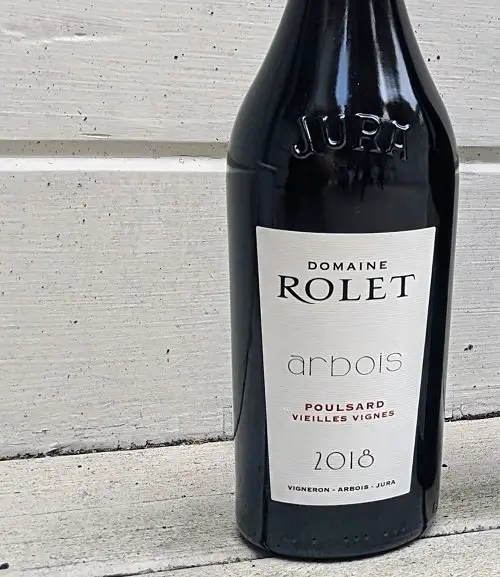
Producer: Domaine Rolet, AOC Arbois, 2018 Poulsard, Vielles Vignes, Jura, France ($26.99 USD)
Appearance: Pale Garnet
- Nose: Medium aroma intensity with red fruit – red cherry, cranberry, strawberry,
- Palate: dry, medium (+) acid, medium (-) chalky tannins, medium alcohol (12.5%), medium (-) body, medium flavor intensity, medium finish
- Primary Flavors: red fruit – cherry, strawberry, red plum, cranberry
- Secondary Flavors: none
- Tertiary Flavors: dried rose petal
Quality Assessment: This is an acceptable wine. The medium (+) acid brings out the juicy red fruit that dominates the wine’s profile dominated by cherry, cranberry, and strawberry. The wine isn’t complex and doesn’t show signs of oak aging, however, the acid and fruit profile suggest a wine made in an easy-drinking style, which this delivers in spades.
The wine is rather one-note with the red fruit, lacking complexity, and lacks the aroma and flavor intensity with a longer finish of the higher quality wines.
If you enjoy cheery Pinot Noir from California’s Central Coast, this wine would speak to you.
Aging Potential: Drink in the next year or so. The 2018 is already showing signs of age with the garnet color, and, while it does still have boatloads of primary fresh fruits and acid, it doesn’t have the alcohol or tannin structure to help this develop much further with age. The winemaker intended this to be enjoyed sooner rather than later.
Pairing Partners. I’m munching on potato chips as I’m writing and sipping along, quite merrily. If you have an herb-roasted chicken, trout, or pork chop, those would all be winning choices. Vegetarians may want to try an herbed couscous- or rice-based salad (this vegetarian herby rice salad looks like a winner).
Thirsty for More?
Love lesser-known wines from far-flung wine regions? Check out Baga, a little-known Portuguese grape that deserves your attention.
Host your own wine tastings? Here’s an exhaustive list of the order you should taste your wines.




